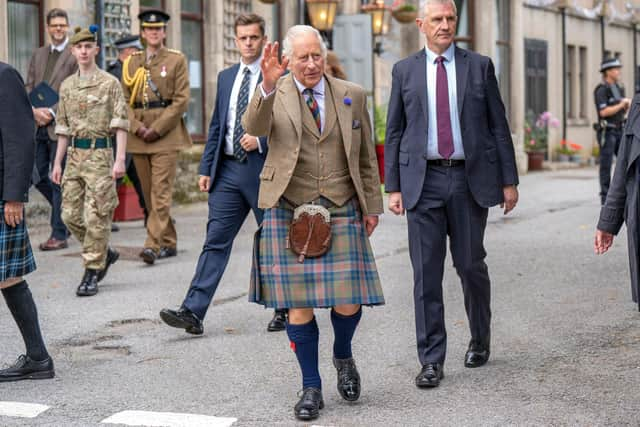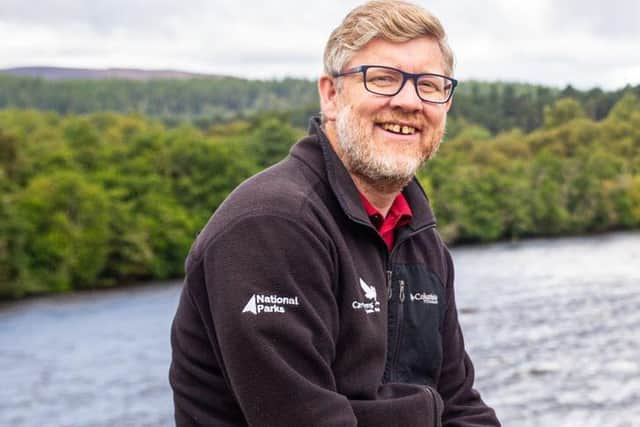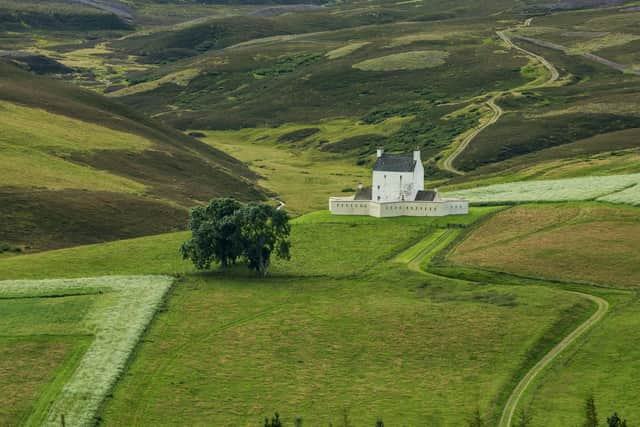Exclusive:King Charles: Monarch's estate near Balmoral to be restored in carbon plan with help of £650,000 in public funds
A Deeside estate inherited by King Charles has attracted more than £650,000 in public funding to restore hundreds of acres of degraded peatland, with the scheme set to generate significant profits while preventing tonnes of carbon from entering the atmosphere.
Delnadamph, which sits north of Balmoral, was bought by Elizabeth II for grouse shooting in the 1970s. But the land is now being used to help tackle climate change by repairing peat damaged in part by decades of field sports.
Advertisement
Hide AdAdvertisement
Hide AdCrucially, the estate is testing a green finance model which mixes public and private funds to restore nature, sequester carbon and create financial gains, some of which will be shared with the surrounding Cairngorms community.


Canup Ltd, a commercial trust that holds both Delnadamph and Balmoral Estate, has received £655,403.87 of public funding for the restoration of 700 acres of degraded peatland. Meanwhile, Santander has provided an undisclosed sum of capital for the project.
Thousands of carbon credits will be generated by the project, each rewarded for every tonne of carbon sequestered from the atmosphere, which can be sold by Canup to companies wishing to offset their own emissions.
Around 42,000 carbon credits, worth £23 each at present, will be generated by the scheme over its lifetime. So far, Santander has bought 16,000 credits.
Meanwhile, 10 per cent of the value of the carbon credits generated at Delnadamph is being given to the Cairngorms Trust, which promotes sport, wellbeing and nature projects for people living in the park boundary.


Grant Moir, chief executive of the Cairngorms National Park Authority, which funds peatland restoration within its boundary, said the scheme at Delnadamph sought to do something “different” in terms of green finance and how it can be used for community gain.
Mr Moir said: "We obviously have lots of people doing peatland restoration across the park with lots of different landowners. We discussed who was interested in doing something and willing to work on a voluntary return to the community.
"Delnadamph put their hand up and we are now working with them on the trial."


Advertisement
Hide AdAdvertisement
Hide AdMr Moir said peatland restoration had “generally” been done through 100 per cent government funding, which provided upfront capital for peatland restoration in return for carbon credits in the past.
He said: “What we were looking at at Delnadamph was if there was a way to do this differently, which reduces the pressure on the public purse and gives us a way to get some of that money that potentially comes back in the future through the selling of carbon credits to go back into the community in the Cairngorms.
“There is public funding in the capital costs and there is private funding. At the moment you wouldn’t be able to repair peat solely with private money because in effect the value of the carbon credits doesn’t add up to how much it would cost you to repair the peat. So we have a shared model.
"We have taken down the public money that has gone into the capital, but we haven’t been able to take it down to zero. Obviously, over time if the carbon price increases, there is potential to do that.”
Such natural capital schemes are regarded as key to helping Scotland meet it climate change ambitions. But there are concerns that local communities are being frozen out of opportunities presented by Scotland’s target of becoming a net zero country by 2045, not least given rising land values due to demand for natural capital schemes which are supported by public funding.
Several estates in the Cairngorms have been bought up by private investors in recent years, including by firms Standard Life, BrewDog and Aviva, for tree planting and peatland restoration.
As well as driving community benefit, the project at Delnadamph also hopes to show that investment can flow into nature restoration projects without requiring land acquisition, the park authority said.
The project at the King’s estate comes four years after the monarch established the Circular Bioeconomy Alliance (CBA) to bring together investors, companies, governments and local communities to push for the restoration of biodiversity.
Advertisement
Hide AdAdvertisement
Hide AdOne of the members of the alliance is Palladium, a global firm that is working with 15 national parks across the UK, including the Cairngorms, to secure private sector funding for schemes such as that at Delnadamph.
The peatland restoration work also comes at a time of increasing scrutiny of the way the King’s own land is managed amid his impassioned pleas to tackle climate change.
Santander said it would use the 16,000 carbon credits bought from Canup to offset emissions from its own business operations.
A statement said: "As part of its net zero commitment, Santander UK uses offsets as an interim measure while it executes on its long-term strategy to reduce its own emissions. The Palladium credits align to our desire to ensure that any offsetting uses high-quality carbon credit schemes while also supporting nature based solutions.”
Palladium said it would not take a share of carbon credits generated by the scheme
A statement said: “"In our environmental work in the UK, our goal is to act like a project developer in the renewable energy sector. So we work with landowners to design the projects, do the feasibility assessments, engage with the right investors and arrange financing, design approaches to share benefits with local communities, set up the right legal structure for the projects and then manage the delivery work.
"Traditionally, nature projects rely on government and philanthropic grants for funding. We believe that ethical investment from the private sector can play a meaningful role in scaling up nature restoration work and carbon removal in the UK.”
Buckingham Palace was approached for comment.
Comments
Want to join the conversation? Please or to comment on this article.
